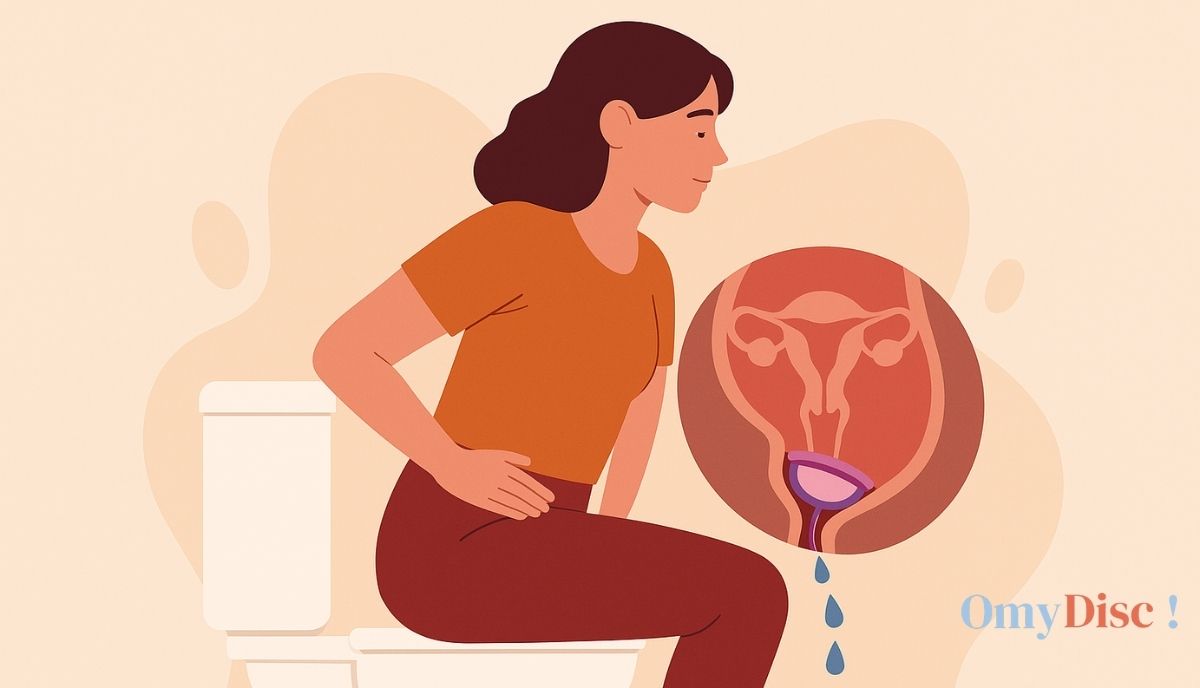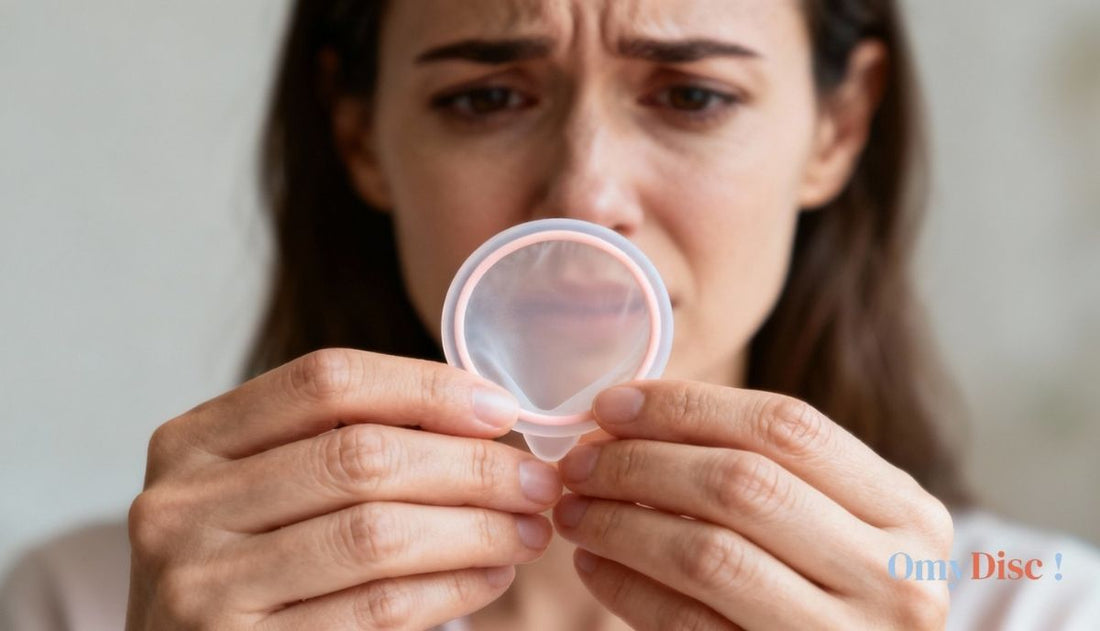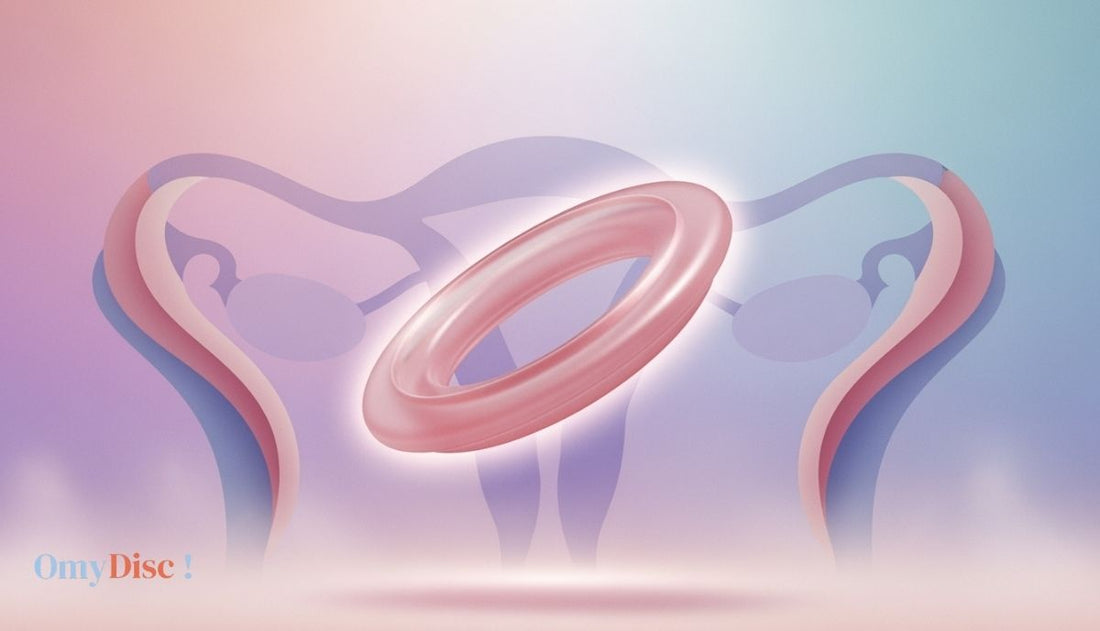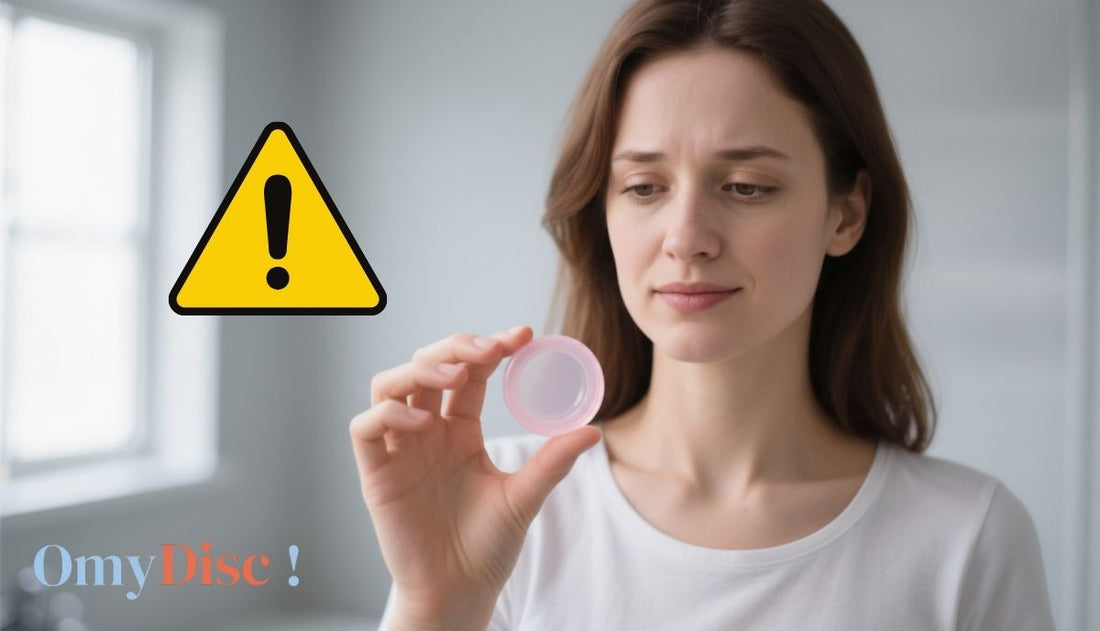Imagine a menstrual product that empties itself without needing to be removed. It’s not a dream—it’s the reality of autodumping. Some menstrual discs, like those we offer at OmyDisc, are designed to autodump while you're on the toilet. This allows you to wear your disc for longer, up to 8 to 12 hours, without removing it—even during heavy flow.
What is autodumping with a menstrual disc?
Autodumping is the ability most menstrual discs have to empty without being removed. Unlike a menstrual cup, which must be taken out to be emptied, soft discs are designed to release fluid on their own. This happens with a simple pelvic floor contraction, like when you're using the toilet. That contraction slightly shifts the menstrual disc, allowing blood to flow out without needing to take it out.
How does autodumping work with a menstrual disc?
Whether you're standing, sitting, or moving, your disc stays in place and collects your menstrual flow without leaking, because it sits horizontally in the fornix, deep in the vagina, just below the cervix. The menstrual disc can autodump during a pelvic floor contraction, such as when you're on the toilet. Once the pressure is released, the disc returns to its place automatically. This mechanism works particularly well with soft discs with a flexible rim, like OmyDisc, which enhance comfort and ease of use every day.
Once the pressure is released, the disc returns to its place automatically. This mechanism works particularly well with soft discs with a flexible rim.
Here is a summary of the steps to follow:
- Sit comfortably on the toilet, in a seated position. For more comfort, you can slightly elevate your legs.
- Contract your pelvic floor muscles, as if you were pushing to urinate.
- The disc tilts slightly forward and autodumps into the toilet, without you needing to remove it.
- Relax your muscles: the disc should naturally return to its place automatically. However, if your disc doesn’t reposition correctly, you’ll need to gently push it back by pressing the rim toward the back with your finger.

At OmyDisc, our menstrual discs are specially designed to enable autodumping.
Can all menstrual discs autodump?
Yes, all menstrual discs, regardless of size or brand, can technically autodump, but for some, the process is more difficult.
A disc that fits perfectly and is fairly firm will be harder to autodump than a softer disc—it depends on your pelvic floor. Some discs are less practical for autodumping than others, like the Diva Disc, which has an anti-leak design that makes autodumping much harder.
The benefits of an autodumping menstrual disc
Using an autodumping menstrual disc means choosing to:
- Enjoy up to 8 to 12 hours of use without having to remove, replace, or clean it—even during heavy flow—whether you're out, at work, at home, or exercising.
- Avoid getting blood on your fingers when removing it—try to autodump your menstrual disc before taking it out.
Note that even if the disc dumps automatically, you still need to rinse it at least every 8 to 12 hours to prevent any risk of infection or toxic shock.
Drawbacks of menstrual disc autodumping
- The risk of leaks: for some people, pelvic floor pressure may be too strong and cause unintentional leaks when laughing, coughing, etc. To avoid this, choose a firmer or better-fitting disc.
- Autodumping requires a bit of practice to fully understand how it works and how to control when and how strongly to contract your pelvic floor.
- Difficulty assessing your flow: since the disc dumps itself when you go to the toilet, it becomes harder to measure how much blood you've lost.
Our tips for using an autodumping disc correctly
- Start with a few test runs at home to learn when the disc dumps and how to control your pelvic floor contractions.
- When on the toilet, lean your torso slightly forward and elevate your legs to facilitate autodumping.
- Your disc might leak if it's poorly positioned or if you contract your pelvic floor too strongly. Keep a soft, unscented reusable wipe or tissue within reach in case of unexpected dumping.
- And most importantly, don’t forget to remove and rinse it at least every 8 to 12 hours to avoid any infection risk.
Autodumping or leak: how to tell the difference?
Autodumping is a voluntary release of blood, often while you're on the toilet. It’s triggered naturally by a light pelvic floor contraction, without needing to remove your disc.
On the other hand, a leak is an involuntary and uncontrolled flow of blood outside the menstrual disc. It happens when the disc is incorrectly positioned or not the right size, and can occur when sneezing, laughing, squatting, etc.
Choose a firmer or better-sized disc to prevent these leaks.
Flexibility: the key factor when choosing an autodumping menstrual disc
When looking for a menstrual disc that enables autodumping, remember that it's not the size but the flexibility of the disc that determines its ability to autodump.
To autodump, your disc must be soft enough to tilt under the pressure of your pelvic muscles (like when you go to the toilet), without needing to be removed. However, a disc that’s too soft might autodump every time your pelvic floor contracts and leak with every sneeze or laugh. On the other hand, a disc that’s too firm will have trouble autodumping. So, if your pelvic floor is weaker, we recommend using a softer menstrual disc to take advantage of autodumping.
Frequently asked questions about autodumping menstrual discs
Does autodumping mean my disc is incorrectly positioned?
Not at all! Autodumping is a normal phenomenon that should only happen on the toilet, triggered by pelvic floor contraction. If your disc dumps at other times—like when walking, laughing, or coughing—it’s a leak, not autodumping. This leak is caused by a poorly positioned or incorrectly sized disc.
Can I autodump my menstrual disc every time I go to the toilet?
Yes, it’s even a great trick to extend your disc’s wear time. But be aware: even if the disc only partially dumps, it must be removed, emptied, and rinsed every 8 to 12 hours to prevent any risk of infection or toxic shock.
Is autodumping dangerous for the pelvic floor?
No, as long as it’s triggered by a light, voluntary pelvic floor contraction—like when you urinate—there’s no risk, and it can even help strengthen your pelvic muscles.
Do I need to reposition the disc after autodumping?
Yes, absolutely. Once the blood has been released, make sure the disc is correctly placed under the cervix and tucked behind the pubic bone to avoid leaks. Usually, relaxing your pelvic floor is enough for the disc to reposition itself. If not, insert a clean finger into your vagina and gently push the front rim of the disc back.
Does autodumping happen at night?
No. Autodumping mostly occurs while sitting, when you contract your pelvic floor. Since you’re usually lying down at night and this position doesn’t favor pelvic contractions, the disc won't autodump during sleep. However, if your flow is heavy, it may fill up completely and overflow, causing leaks.






